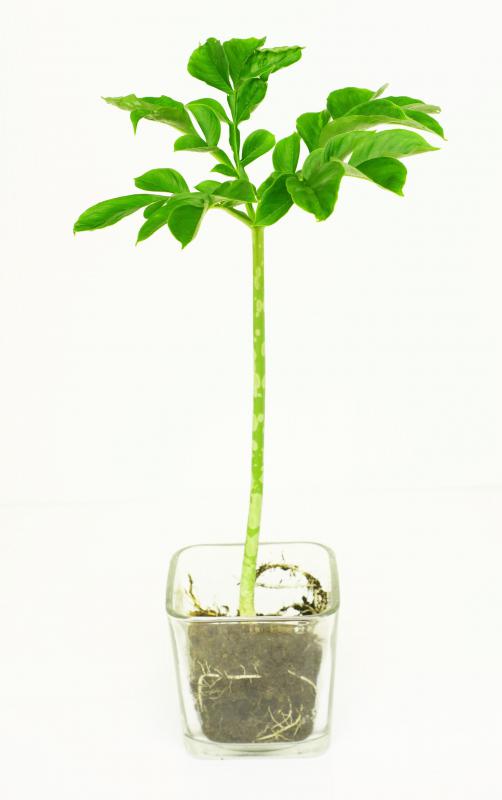At WiseGEEK, we're committed to delivering accurate, trustworthy information. Our expert-authored content is rigorously fact-checked and sourced from credible authorities. Discover how we uphold the highest standards in providing you with reliable knowledge.
What is Glucomannan?
Glucomannan is a water-soluble dietary fiber made from the root of the konjac plant. It is widely used as an emulsifier and thickener in Asian foods such as tofu and noodles. Also marketed as a dietary supplement, it is available in pill or powder form and offered as a weight-loss product, as a constipation cure and as a treatment for high cholesterol and diabetes. As a dietary supplement, it is available in powders, shakes and tablets, sold as an individual supplement or mixed with other components.
Like other fiber sources, glucomannan is often used to treat constipation. It works by absorbing water, allowing the stool to pass more smoothly. Studies relating to its effect on constipation have shown positive results, with a marked increase in stool frequency and size.

Advocates promote this dietary fiber as a weight-loss product as well. Glucomannan combines with water to form a thick gel that can give the dieter a full, sated feeling. Researchers have not determined this fiber’s effectiveness as a weight-loss supplement.
Studies relating to diabetes also have had promising results. These studies have found glucomannan effective in reducing cholesterol levels in diabetics. They also indicate that the fiber might be useful in controlling blood sugar levels.

Studies indicate that glucomannan might be helpful for some or all of these conditions, but the level of that effectiveness has not been clearly identified. Many of these benefits are established properties of all dietary fiber, and glucomannan has not been identified as superior. Regulatory agencies such as the Food and Drug Administration in the United States had not approved the supplement for the treatment of any medical condition as of October 2010.

Most side effects, such as gas or bloating, are relatively minor, causing only discomfort or distraction, but concerns over potential side effects have led to some strong warnings. Its impact on cholesterol and blood sugar make it unsuitable for people already under treatment for diabetes, because it can interfere with existing medications. Expectant and breastfeeding mothers are also discouraged from using the supplement.

Failure to take glucomannan with sufficient water, especially in pill form, has been identified as a potential hazard. The fiber absorbs enough water to swell but not enough to become fluid, and it can potentially form a blockage in the digestive tract or even in the throat. People who have difficulty swallowing or who have a narrow esophagus should not use this supplement.
AS FEATURED ON:
AS FEATURED ON:














Discuss this Article
Post your comments